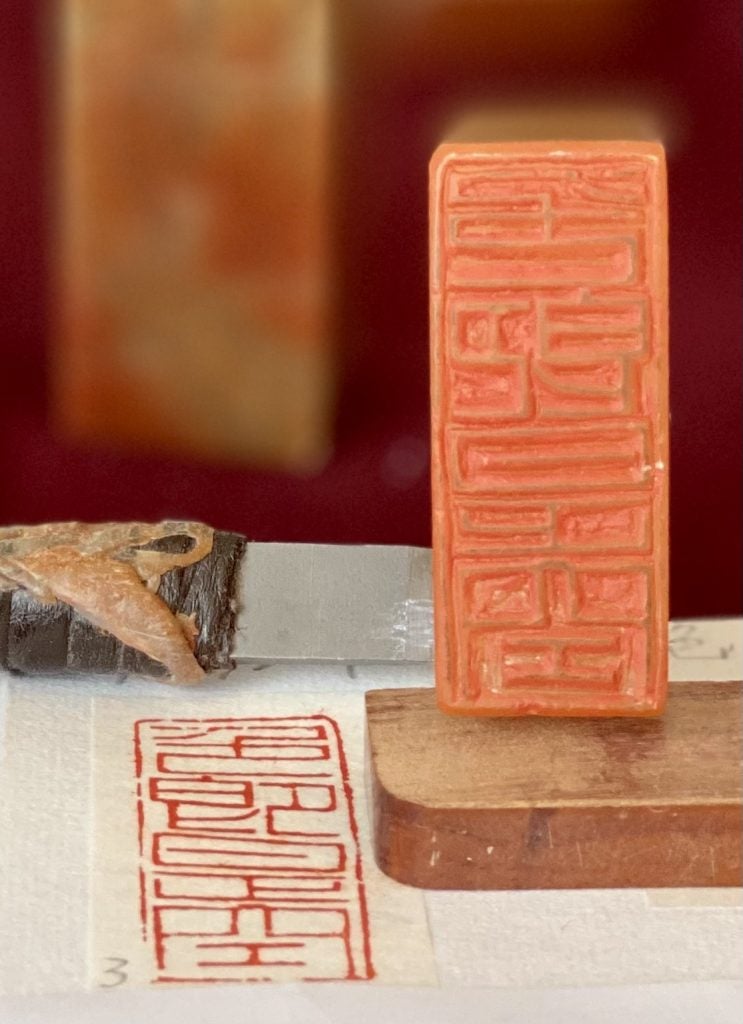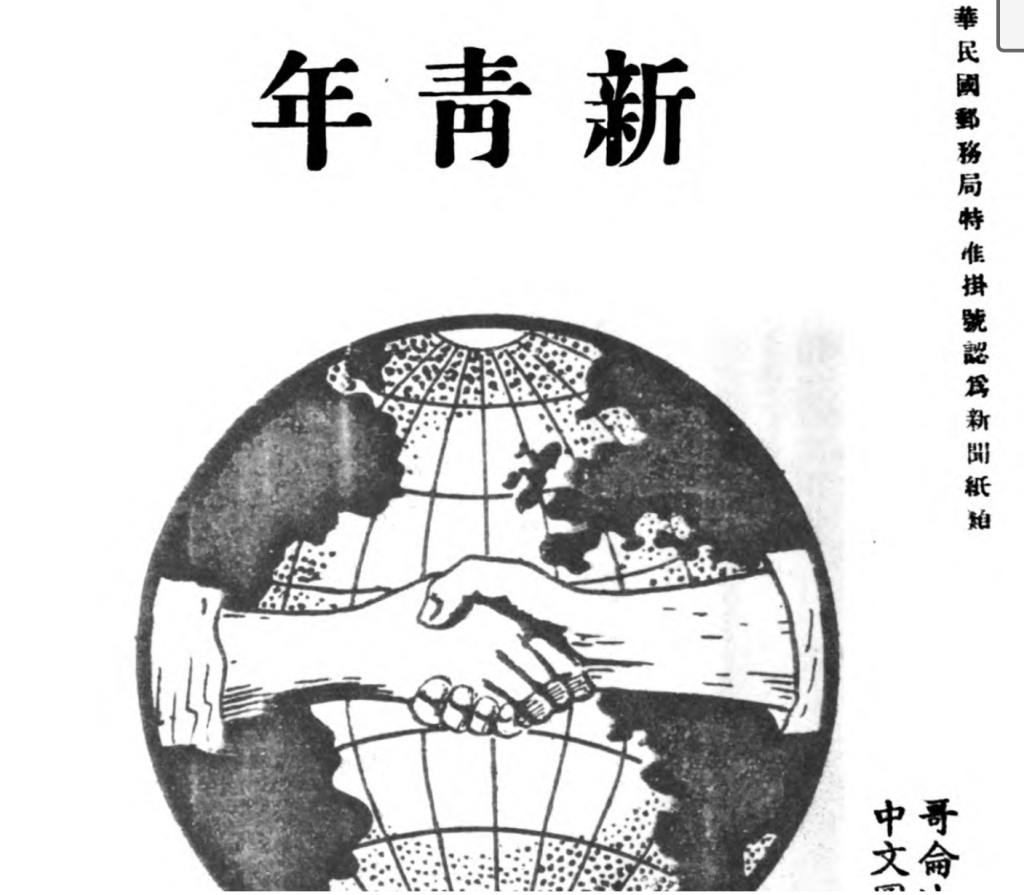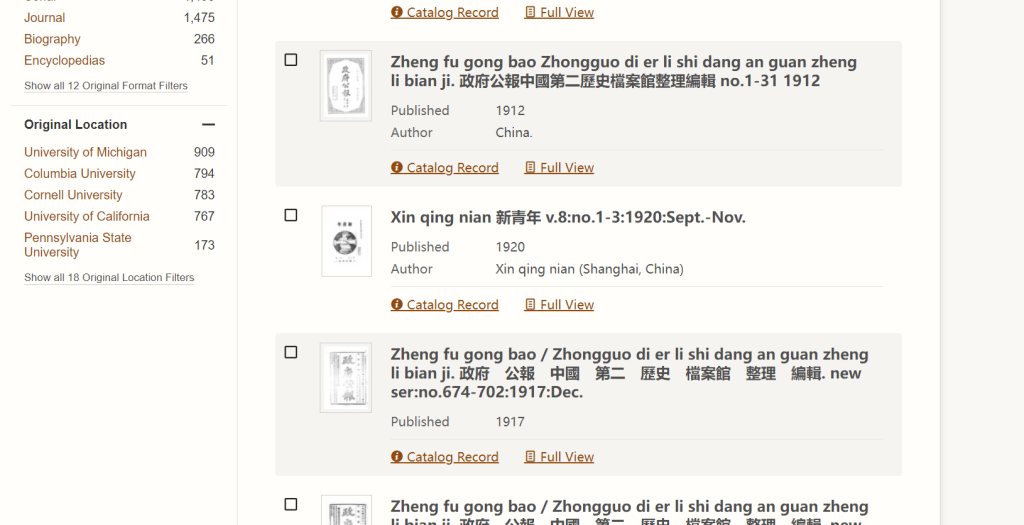Jing Ping Mei and Chinese Character Transformation
Introduction
My HathiTrust collection focuses on two main aspects. One is about Jing Ping Mei as one of the classic Chinese works of literature, specifically attempting to uncover the book’s lasting popularity today while it was banned for over two centuries since its first publication. Another aspect of my collection would be focusing on the ways how Chinese characters are being transformed overtime and mainly because I found myself to be interested in the original text that was written in Jing Ping Mei and would like to investigate in what ways the Chinese characters during that period are similar or different to modern times.
Motivation
I have heard that some classic Chinese literature is something that all of us should be reading at least once throughout our lifetime, yet, I did not have much exposure to Chinese literature after coming to the United States at the age of 14. However, I have always been interested in one of the classic Chinese literature – Jing Ping Mei (金瓶梅), also known as The Plum in the Golden Vase or The Golden Lotus. What draws me to spend time digesting all the texts is one of the podcasts that I have been listening to – 吳淡如人生不能沒有的故事 (Necessary Stories throughout the Life). The host spent 21 episodes highlighting all the key parts throughout the plot, including an in-depth analysis of why all the characters are taking the actions that they are taking given that period, especially for women in China during the 1600s-1700s.
Jing Ping Mei 金瓶梅
The plot of the story is centered around Ximen Qing (西門慶), a corrupt social climber as well as a merchant at the same time along with his six wives. While many said the main reason why this book has been banned for over two centuries was due to the nudity as well as sexual scenes that are described throughout the story, some believed this book has shown too much about the corrupt social hierarchy as well as the government was the main reason why that this book was banned. One of the most influential authors Lu Xun commented on this book during the 1920s, “it is the most famous of the novels of manners in the Ming dynasty, both significantly and effectively showing the condemnation of the whole ruling class during the end of Ming dynasty”.
The Purpose of being a woman throughout China was to mainly breed children for husband, and take good care of her family as well as her parents for the rest of her life. These were the general consensus on how the public perceived women throughout China over the course of history for over thousands of years. Education resources were scarce throughout all dynasties in China, not to mention very few women have the ability to be educated in which most females in China were illiterate due to lack of education. Therefore, as long as females are able to find a husband that is willing to take care of them as well as providing needs to their life that everything should be good.
However, given the historical context of Jing Ping Mei that it was the end of Ming Dynasty, meaning there are lots of social problems that were taking place specifically on the corruption of the government. Most people are not able to live a decent life if they do not have any form of connections with the government, and Ximen Qing from Jing Ping Mei was a businessman/ merchant that works tightly with the government in which as long as there are some sort of “profitability” taking place that the government would be gladly opened leeways to Ximen Qing to grant all his requests.
Literature of Jing Ping Mei vs Contemporary Chinese Literature
The main reason why that Jing Ping Mei intrigued me besides the social problem it portrays is the way of language is being used. Over the course of time, both Chinese literature and character have transformed several times throughout almost three thousand years of Chinese history, from ancient times, before the century all the way to the present. Though Jing Ping Mei was written during the 1600s-1700s (the exact time period is unsure since the book has been revised a couple of times after being banned), its text and literature are surprisingly similar to modern times during the 1900s. Not only is the style of a character similar, but so is the language itself. The 1700s-1800s marked the critical period of how China is in the middle of a transformation from ancient periods to modern times, and its style of language has significantly shown that.
Transformation of Chinese Character


As I worked my way to finalize this project, I noticed and became aware of similarities as well as differences over the course of Chinese language evolution. After sharing the project that I am working on for this class with my mom, I found she recently drew herself into Chinese Seal Carving. The characters that she carved were from the Qin Dynasty, which is 221-206 B.C. Furthermore, I have found that the translation of each ancient character would be translated into modern times. After a close reading of some pages, it is not hard to find the logistics behind the Chinese language’s transformation and evolution.
Connection to the Class and Peers
Part of the reason why I’m shifting my focus is inspiration from my peers as well as the discussion groups that I was paired with the other day during a class. Randy and Zara’s pieces are the ones that I found most interesting and inspiring when reading their blog post. For Randy, I like the article about how he finds expression of interest through the card game set we have played in class. This gives me a much better direction on how I can make connections and linkage among things that do not seem to have much in common. While it was fun and interesting when I was playing the game in class, I was having some trouble finding the direct linkage on how it can possibly relate with us when it comes to making the HathiTrust collection. Yet, from Randy’s discussion post last week that showed all the logistics behind, especially through randomization, we are able to pair various sets of cards together while they all look different from each other at a glance. For Chimuanya, I really enjoy reading all the poems that she mentioned throughout her post as this is something that I do not have much exposure to, and I find it intriguing to see how those poems relate to other cultures as well as folklore. Chimuanya’s idea on folklore-inspired me to put a deeper focus on simply focusing on one Chinese literature rather than diverge all my focuses without depth on any of those. Then to use that piece of literature to extend all the focus to other pieces such as artwork.
From the group discussion, I was paired with peers that shared common interests as we are all doing topics that are related to Chinese or East Asian literature. Yet, we found amongst ourselves that we all have an interest in translation differences while using East Asian literature/ languages to compare trends and findings we observed from the HathiTrust collection. For example, Yao is interested in seeing the connections between Chinese and Japanese characters, and specifically focusing on how the Chinese character would be pronounced differently in Japanese as well as the logistics behind it. Both Jake and Yining are interested in doing the Chinese literature on how it transforms over the course of time. Hence, I decided to turn my focus to Jin Ping Mei and then extend it further with other works. Since this literature by itself has discussed various aspects of Chinese literature as well as culture, the social scene when China was at the transformation from *ancient to classic times.
*ancient time is before 1600s, classic time is 1600s-1800s, modern time is 1800s-present
Connection to Sawyer Seminar/ Lightning Talk
Nevertheless, the lightning talk, as well as the posts from Sawyer Seminar, have inspired me since the beginning of the class. From Lightning Talk, I would say it gives me a whole new lens to look at things that I have never been exposed to before. The most memorable one was Two men riding on horses in the forest. It is one of the most interesting images I found from our first day of class. From Swarnim’s lightning talk, I have learned that this image does in fact have a strong correlation with colonial literature along with the Hebrew/ Jewish culture. The recitation is focusing on what ways we can utilize all of those contextualized cultural objects and their power relation to help us align our interest in a study or even simply throughout our everyday lives.
From the Sawyer talk, I personally gained something that I have never been exposed to before. For example, in what ways we can be making the connections among all these Asian cultures as well as literature altogether in one place. On top of that, I am most interested in the Multivalence of the Hebrew Alphabet Across Jewish Languages in the HathiTrust repository. Because to me both Hebrew and Jewish are the languages that I rarely have been exposed to throughout my life, and to me, the characteristics of these languages are especially hard to understand or even see the patterns among all of them. Yet, with the power of HathiTrust, they would be able to distinguish the dynamic differences among all the characters including how the grammar structure would work for those languages.
Collection Map: http://www.translationnetworks.com/collections/195
Jing Ping Mei and Chinese Character Transformation Read More »







You must be logged in to post a comment.